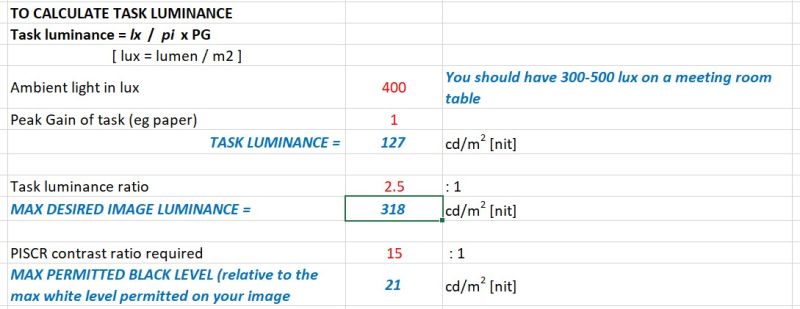Do you design in or design out asthenopia (‘eye strain’) into your meeting and teaching spaces?
This 100% essential step in the AV designer and consultant’s workflow is so easy - but usually overlooked.

As part of a series of short articles, Visual Displays' Director Greg Jeffreys discusses all things AV…
Our eyes are effectively cameras that feed video signal into our visual processing system. They are mechanical devices. The ciliary muscle continually expands and contracts to adjust the lens thickness to focus and the pupil aperture to control the amount of light striking the retina. Working it too hard creates asthenopia, namely eye strain.
In my lighting practice, our professional body is CIBSE, whose Lighting Guides are our bibles (it’s the IES in the US). Factoring asthenopia is effected by a series of illuminance (‘ambient light’) and luminance (reflected or emitted light) ratios.
The critical lighting metric for AV designers is Task Luminance Ratio (‘task’ referring to the object we see at a given moment). Continually glancing from dark to light objects (‘tasks’) gives your eyes the equivalent to the fatal Peleton exercise bike workout just suffered by Mr Big in Sex in the City (wrote the born-again hipster - and check out the hilarious YouTube response Peleton posted!).
By limiting Task Luminance Ratio to 3:1, it’s possible to create environments where people can work for extended periods without that fatigue. I use 2.5:1 to provide some tolerance.
This simple spreadsheet takes 10 seconds to use. The white paper on your desk is the datum used. Message me for a copy or grab it off the Visual Displays website. (And do you see how significant this makes the black levels?)

Posted: 19th January 2022